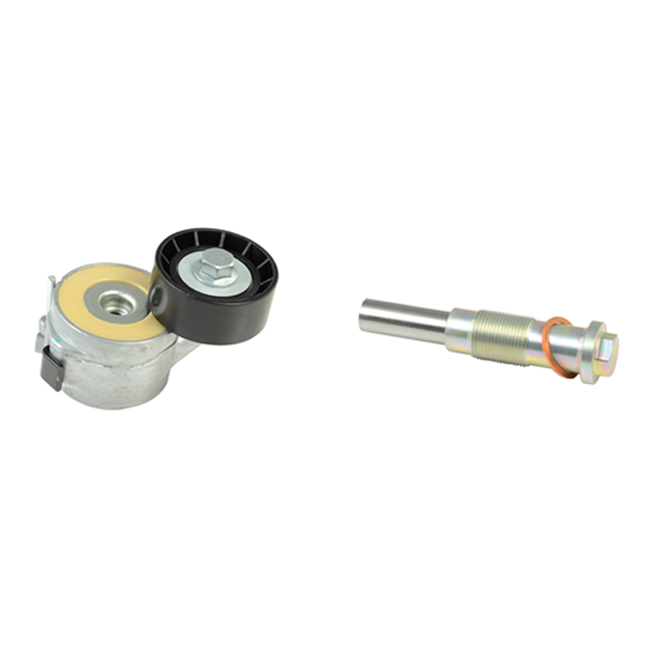

All belt driven engines will have a timing belt, tensioner and several pulleys. The pulleys are responsible for guiding the belt around the engine and various components and drive units. The tensioner is responsible for ensuring the correct amount of tension is applied to the belt so as to maintain synchronous drive. If the tension is too slack or too tight this can result in catastrophic engine failure.
Tensioners can either be manual or automatic adjustment.
Manual belt tensioners require the tension to be setby rotating the tensioner unit and locking it permanently at the required tension. As engine technology has developed and higher operating temperatures were achieved the manual tensioner system was not able to maintain the required performance.
Automatic belt tensioners which are able to self-adjust over the life of the product, promote longer belt life, by better handling the engine loads, and are less affected by temperature variations after correct set up. Automatic tensioners are the default choice for vehicle manufacturers for todays modern engines.
Auxiliary drives, with the exception of elastic belt drives, also have tensioner & pulley setups to drive various components i.e. AC compressors, power steering pumps, water pumps, etc… although the failure of these drive systems rarely cause additional engine problems.